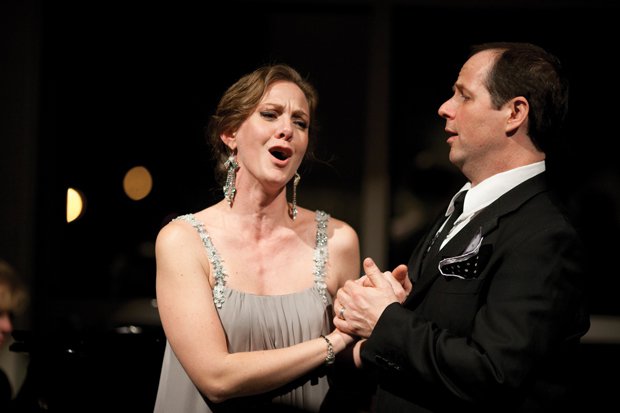Charlie Brouwer’s transcendent sculptures.



Chances are you wouldn’t expect to find an honest to goodness sculpture park in tiny Willis, in southwestern Floyd County, but that’s exactly where sculptor Charlie Brouwer, 70, has put one. Situated along a ½-mile walking trail on his property, which he has named “Out There,” the park typically comprises about 20 of Brouwer’s large-scale wood sculptures. Brouwer chose the name because of the remoteness of the place and also to reference the ideas and meaning behind his work.
Brouwer says he was a late bloomer in terms of art. An English literature major in college, Brouwer had a campus job as a photographer. One of his assignments was taking slides of an art history book that would be used in lectures. His interest piqued, he began taking art classes. He would go on to earn an MA in painting and an MFA in sculpture at Western Michigan University and teach art at Radford University from 1987 to 2008. Last year, he was awarded a VMFA Fellowship for 2016-17.
Brouwer makes indoor sculptures, large outdoor work, and large-scale, site-specific art installations. What comes across in speaking with Brouwer and looking at his work is the deep spirituality, humility and morality underlying it. This is not in any way preachy—it is evident in what he chooses to exalt: nature, family, home, all presented in an uncomplicated way. Brouwer sees the beauty in the ordinary and uses his work to draw attention to it.
Brouwer’s chosen medium is wood, which he uses for both his indoor and outdoor sculptures. He isn’t interested in a straight, realistic representation of nature. His contemplative work is really about transcending the real world to a higher plane, drawing on his own life experiences for examples that help convey this, and pointing to the essential truths of life that are contained within these devotional pieces.
Brouwer’s outdoor sculptures take the form of figures or structural objects. The figures are assembled from many different pieces of wood, which he joins together with deck screws, slowly building up the skeletal structure into an imposing 3-D collage. He uses locust wood from a local sawmill. A strong, dense wood, locust is rot resistant, making it ideal for use in outdoor works.
A number of these oversized figures are male, wearing what looks like a Homburg hat and carrying something—a giant oak leaf, a house—referencing an idea close to Brouwer’s heart. The hat is a nod to German conceptual artist Joseph Beuys, who believed that everyone was an artist and every aspect of life could be approached creatively, and also to Brouwer’s father, a salesman, who both wore this kind of hat.
When a sculpture is displayed outside, visitors see it in natural light, which changes during the course of the day, and in all kinds of weather. “Another part of the experience, especially for first time visitors, is the way the human figures can surprise you as you come upon them unexpectedly,” explains Brouwer. “This occasionally happens to me when I’m out mowing or getting firewood and not paying attention to the sculptures. Even I can be caught off guard and startled by them.”

Ladders are potent symbolic objects for Brouwer: “I thought a ladder was a really rich metaphor,” he explains. Brouwer recalls that borrowing ladders was a common thing to do when he was growing up. “People knew who had longer ladders, or who had this kind or that kind. It was one of those things that neighbors did. And that led to expanding this to the whole community and borrowing ladders to create something that represents a wholeness, everybody’s hopes and dreams together just like they were in my memories. I tried to think of ways to expand making my art and reaching out to the audience. I wanted to see if you could convince people to lend their ladder for a few weeks to create a metaphor for community and to remind people that one of our jobs is to support each other.”
Brouwer’s first ladder installation was in 2002 in his hometown of Holland, Michigan. He approached the local art center with his idea and they liked they it, so with friends and relatives helping, Brouwer’s “Rise Up .…” public art project was born (the name was eventually changed to “Rise Together …”).
Contributors to the project part with their ladder for about a month—they can be in any condition and of any kind. In addition to Greensboro, Brouwer has completed 11 other ladder installations in cities, including Winston Salem, North Carolina; Grand Rapids, Michigan; Roanoke; Atlanta; Chattanooga, Tennessee; and Allentown, Pennsylvania. Another is planned for Kingsport, Tennessee, in 2017. The result is an expansive tangle of ladders held together with heavy-duty zip ties that is dynamic, colorful, and just plain fun. Brouwer says that “the structures could not be built without the zip ties I use to hold the ladders together, they are like the empathy that holds communities together.”
The ladders are returned to their owners at the end of the installation. If someone doesn’t want their ladder back, it’s donated to Habitat for Humanity. There’s virtually no waste.
As his art makes clear, Brouwer values nature, home and family above all else. At “Out There” he has all three. Brouwer does welcome visitors by appointment, and the studio and grounds are also open periodically, so if you’re in Floyd County, it’s worth a trip. You will find that art and creativity and the finer things in life are everywhere if you know where to look. CharlieBrouwer.com
This article originally appeared Dec. 12, 2016










